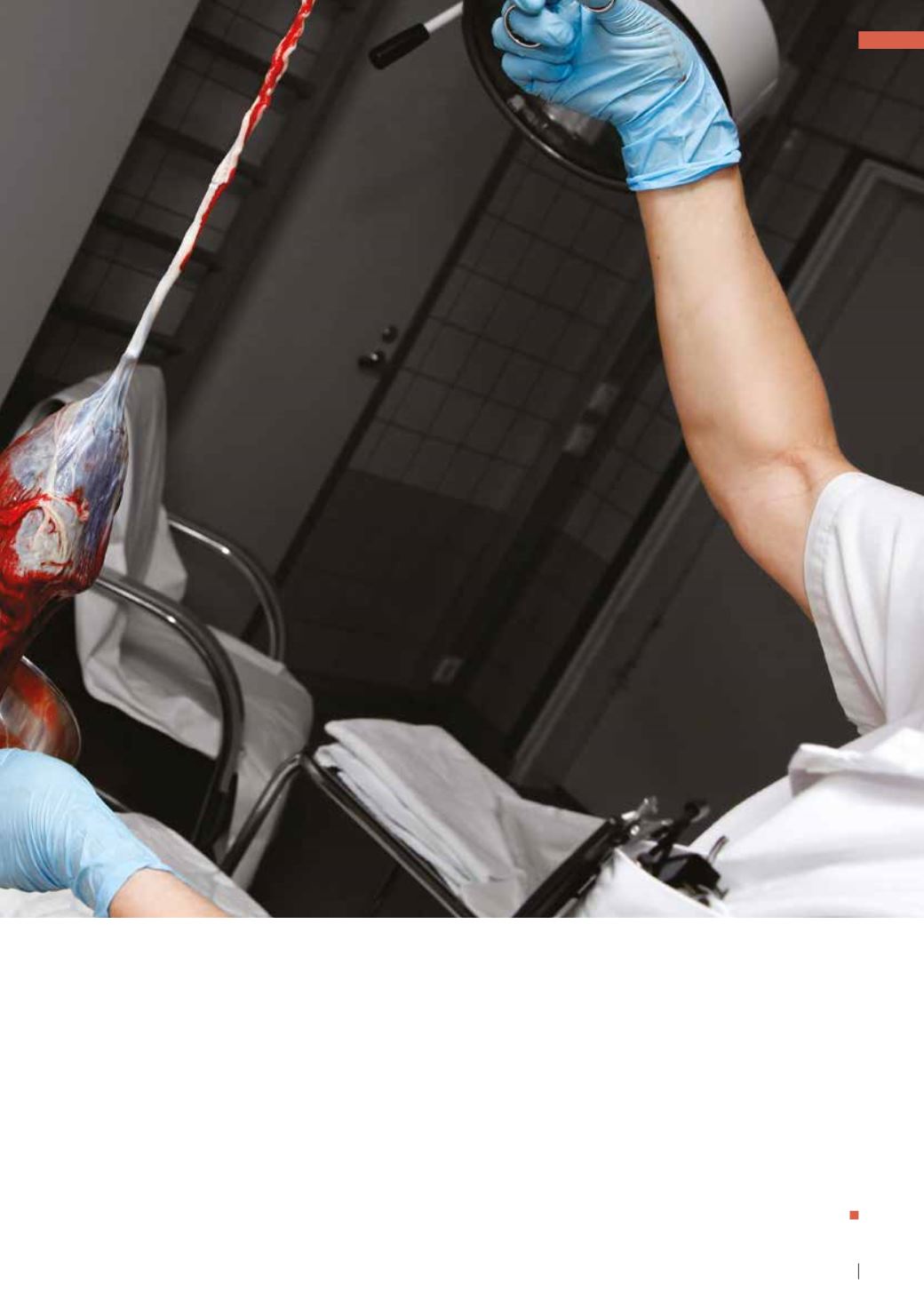

traction were consented and offered
the windmill technique of placenta
delivery.
Study cases were compared with
controls where an operative manual
removal of placenta was performed.
Patients with suspected placenta
implantation problems, uterine
atony, severe vaginal tract injury and
coagulopathies were excluded from
the study.
Over the study period, 31 patients were
recruited with 14 in the study arm and 17
in the control group. Using the windmill
technique for retained placenta, 86%
(12/14) of patients avoided invasive
operative manual removal of the
placenta.
A statistically signi cant reduction
in mean blood loss (429 vs 724 mL,
P = 0.02) and mean postoperative fall
in haemoglobin values (1.3 vs 2.4 g/
dL, P = 0.03) were observed. Time
to delivery of the placenta, antibiotic
prophylaxis, and general anaesthesia
were reduced.
Dr Hinkson concluded that the windmill
technique for delivery of the retained
placenta is a simple, safe, effective and
easy-to-teach technique that reduces
invasive operative manual removal of
the placenta, reduces postpartum blood
loss, reduces delay in the placenta
delivery and may reduce cost.
This is an innovative and new technique
that can be life-saving, especially in low-
resource areas with limited or no access
to operative facilities.
LABOUR
RCOG World Congress 2017
• PRACTICEUPDATE CONFERENCE SERIES
7









